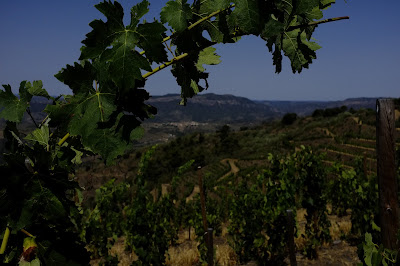An update from our Tokaji producer Holdvolgy, that gives an insight into the waiting game involved in late harvested noble rot Aszu wines.
The whole range of Holdvolgy wines showed brilliantly in a recent tasting held at the Connaught. Both dry and sweet these wines have a freshness and delicacy that repays constant revisiting in the glass...
2012 - Tiny quantities of high quality Aszú
2012 was not dissimilar to 2011, a kind of extreme Mediterranean summer that put us to the test again. But, thanks to our exceptional crus in Mád basin and careful viticulture, even the little rain we had was enough to ensure the ripening.
Bud break came on time, flowering for early ripening varieties took place by the end of May. Bunch yield and fertilization were optimal, too.
Due to the strong vegetative growth and the corresponding intensive phytotechnical work this year we were the first in the region to harvest our dry wines: Furmint, Hárslevelű, Muscat a petits grains.
Fermentation of our dry wines takes place in used oak, allowing development without imparting any oak characteristics. According to our philosophy we use no cultured yeasts either, the result being a fermentation process that took 2 months! The results should be outstanding.
During autumn the quantity of rain was sufficient, but due to the earlier dry weather the thickening of the bunches’ skins made conditions for botrytis difficult. In early October the botrytis finally arrived, widely and quickly. From that point then we continuously harvested small quantities of he aszú berries that were extremely rich and had perfect concentration.
Finally, however, October finished wet. The long-awaited warm breezy weather didn't arrive and the continuity of the external humidity slowed the concentration process of the berries. On October 27th and 28th we had so much rain that aszú harvesting came to an end.
However, the high-quality Szamorodni bunches we harvested before the rains, that were pressed in our newly built winery with our freshly arrived JLB press, show great promise. The wines are concentrated, silky, rich, some weighing in at almost 22% alcohol potential (which corresponds to a 5 puttonyos aszú) The JLB press follows the principle of the classical presses,but thanks to pressing on higher pressure without loosening, the result is that this way we really get the berries’ essence, nectar out of it.
At the end of November we started aszú winemaking process. For this process Stéphanie chose fermenting Furmint must from Becsek and Holdvölgy crus, its nice acidity structure gives freshness and dynamism to aszú wines. After a few days of maceration, the aszú berries swollen by the fermenting musts were also pressed with JLB press.
And though the quantity fell short of the expectations (approx. 1.500 bottles of 37,5cl) because only the most concentrated and best quality aszú berries were harvested then selected one by one, the quality and the taste is irreproachable.
 | ||||
Healthy bunch of Furmint.
|
 |
| Fully botrytised Aszu berries... |
 |
| A state of the art winery built on ancient cellars. |













.jpg)

.jpg)














